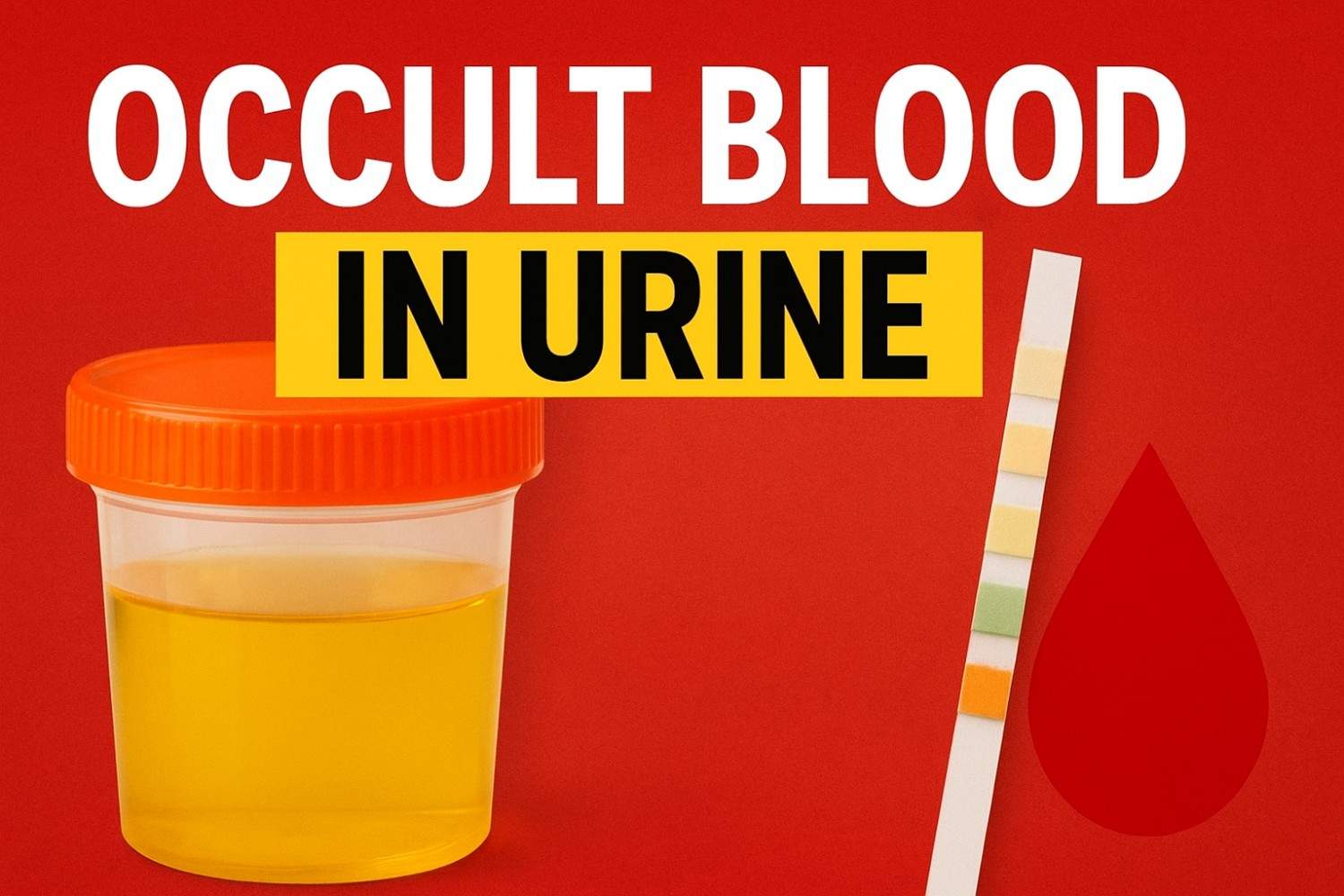
Urine tests are one of the simplest yet most valuable diagnostic tools in modern healthcare. Among the many parameters checked in routine urinalysis, occult blood in urine is particularly important. Even a small trace of blood that is invisible to the naked eye may signal underlying health issues that require medical attention. This test, known as occult blood urinalysis, helps detect the presence of hidden (microscopic) blood cells or hemoglobin in the urine.
In this blog, we will explore what occult blood urinalysis means, why it is done, how the test is performed, possible causes of a positive result, and what patients should know before and after the test.
What is Occult Blood in Urine?
Occult blood refers to blood that is not visible without microscopic or chemical testing. Unlike visible hematuria (blood that makes urine appear pink, red, or cola-colored), occult blood is usually detected only through urinalysis.
The test identifies:
- Intact red blood cells (RBCs) in urine.
- Hemoglobin (the oxygen-carrying protein in red blood cells).
- Myoglobin (a muscle protein released during muscle injury).
Why is Occult Blood Urinalysis Done?
Doctors recommend occult blood urinalysis for several reasons:
- Routine Health Checkups – As part of preventive care.
- Urinary Tract Evaluation – When symptoms like burning urination, frequent urination, or flank pain are present.
- Monitoring Kidney Health – In patients with hypertension, diabetes, or kidney disease.
- Post-Trauma Assessment – To rule out internal injury to the urinary tract.
- Screening for Conditions – Such as urinary tract infections (UTIs), kidney stones, or bladder problems.
How is the Test Performed?
Occult blood urinalysis is a simple, non-invasive test that usually involves the following steps:
- Sample Collection
- A clean-catch midstream urine sample is collected in a sterile container.
- Patients are advised to clean the genital area before collecting the sample to avoid contamination.
- Dipstick Test
- A chemically treated strip is dipped into the urine.
- It changes color if blood (hemoglobin/myoglobin) is detected.
- Microscopic Examination
- If dipstick shows positive results, the sample is further examined under a microscope to confirm the presence of RBCs.
Causes of Positive Occult Blood in Urine
A positive occult blood test does not always mean serious disease. Causes may range from temporary, harmless conditions to more significant health issues:
Common Causes
- Urinary Tract Infections (UTIs)
- Kidney stones
- Strenuous exercise (e.g., long-distance running)
- Menstrual contamination (in women)
Medical Conditions
- Glomerulonephritis (inflammation of kidney filters)
- Polycystic kidney disease
- Bladder or kidney infection
- Prostate problems (enlargement, prostatitis)
- Cancers of the bladder, kidney, or prostate (rare but serious)
What Do the Results Mean?
- Negative result: No hidden blood detected, generally normal.
- Trace or Positive result: Presence of blood; further tests may be recommended.
Depending on findings, doctors may suggest:
- Urine culture
- Imaging tests (ultrasound, CT scan)
- Blood tests for kidney function
How to Prepare for the Test?
- Avoid intense exercise 24–48 hours before the test.
- Inform your doctor if you are on medications like blood thinners or pain relievers.
- Women should ideally avoid giving a sample during menstruation, as it may cause false positives.
FAQs on Occult Blood Urinalysis
1. Is occult blood in urine always serious?
Not always. Temporary causes like exercise or minor infections may clear up on their own. Persistent positive results, however, need medical evaluation.
2. Can dehydration cause occult blood in urine?
Yes, dehydration can sometimes make urine more concentrated, leading to abnormal findings.
3. How long does the test take?
The dipstick test provides results in minutes. Microscopic examination may take a few hours.
4. Can certain foods affect results?
Yes, foods like beets or medications containing dyes may cause urine discoloration but do not usually affect occult blood test accuracy.
5. What should I do if my test is positive?
Do not panic. Consult your healthcare provider. They may order additional tests to identify the exact cause.
Key Takeaways
- Occult blood urinalysis detects hidden blood in urine, which can be an early sign of urinary tract or kidney-related issues.
- A positive result does not automatically mean a serious condition but should not be ignored.
- Simple lifestyle factors (exercise, medications, or menstruation) can influence results.
- Follow-up with a doctor is essential to determine the exact cause.
Disclaimer
This blog is for educational purposes only and should not be taken as medical advice. Occult blood in urine can have many causes, both minor and serious. If you have a positive result or experience symptoms like pain, fever, or visible blood in urine, please consult a qualified healthcare professional for proper diagnosis and treatment.



